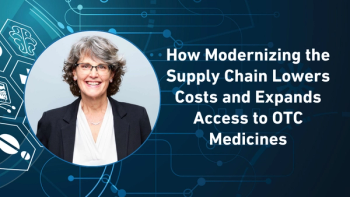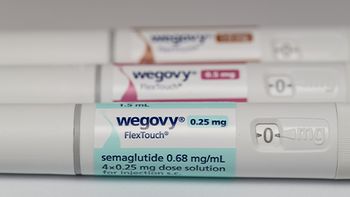
- Pharmaceutical Commerce - March 2009
Will Closed-Loop Marketing Energize the Pharma Sales Process?
Among sales-force automation tools, closed-loop marketing is getting attention as a better way to sell
It is rapidly becoming a cliché that pharma sales forces must change their traditional practices. Sales forces are being reduced by the thousands; practitioners are putting more and more limits on face time with reps; the sales process is becoming more complex with formulary design and related managed-care issues, yet more constrained through new state laws and the PhRMA promotional code of ethics.
It would be nice to say that an evolving IT tool, closed-loop marketing, is riding to the rescue. But the results so far have been mixed. No one is rejecting CLM outright, but the sense among industry sources is that it will need to be applied more intelligently.
By using PC-based technology to capture every interaction with a physician during a detail, CLM promises to let marketing groups analyze physician preferences and the most effective sales tactics, then use this information to deliver personalized content that closely matches physicians’ interests— “closing the loop” and ultimately boosting prescriptions.
Most of the products marketed as CLM (also known as Closed Loop Promotion, or CLP) began—and often are still primarily used—as e-detailing software that typically runs on tablet PCs. The software displays and manages visual aids such as presentations, reprints, and even animations. As it does so, it captures the interactions between reps and physicians by recording which items are viewed and for how long.
In theory, to start closing the loop, the software transfers the data from the tablet to a back-end system for analysis. Through integration with the company’s customer-relationship management system (CRM) and data sources such as records of prescribing behavior, the data captured during details can be correlated with other information to pick out trends. As a result, marketing groups can better understand what works for each physician or different groups of physicians, and adjust e-detailing content accordingly. The tablet-based software can manage large amounts of content that can be navigated in different ways; it may suggest the most effective content based on the information that has been built up about the physician.
That’s the theory, but many feel that the practice has been a different story. Starting more than five years ago, a surge in pharma interest and vendor activity—Proscape Technologies is generally recognized as the pioneer—helped put tablets in the hands of thousands of reps, and generated many e-detailing and CLM pilots. Merck & Co. and AstraZeneca are among the companies named as Proscape customers that have widely deployed tablets to the sales force.
However, often deployments never made the leap from e-detailing to CLM, or from pilot to production. One reason was that pharmaceutical companies simply did not analyze and act on the vast amounts of data generated from e-details. “My skepticism is that people have not effectively closed the loop,” says Dale Hagemeyer, a research VP at Gartner Inc. “I’m not aware of many companies that have collected data and usefully used it. I’m a believer, but somebody needs to go and close the loop.” Indeed, he says, in at least some cases, pharmaceutical firms purchased the software, used it simply as a “show-and-tell delivery platform, then said ‘I think I can do this myself rather than paying these companies a bunch of money.’”
Simply converting paper-based materials to e-details “doesn’t fundamentally change the relationship with the physician. The value you get from it is not great,” says Matt Wallach, executive VP at Veeva (formerly, Verticals onDemand), a CRM software-as-a-service supplier. Because the industry did not effectively analyze the data generated from tablets, it was not able to analyze the ROI delivered by the technology, he says. “So basically what you had was a plague of pilots. They never got beyond pilot because they could not prove ROI, and they could not prove ROI because they did not use the data.”
More stakeholders, more complexity
Now, some say they believe this situation is changing—not least because the pharma industry itself recognizes that it needs to change. Implementing true CLM far more is challenging than simply providing tablets to the sales force, says Chris Colapietro, VP of strategy and marketing at HighPoint Solutions, an integrator in King of Prussia, PA that has worked on CLM projects for several pharmaceutical industry clients. “It’s more about change than technology,” he adds. He believes implementation involves at least seven key stakeholders: Sales, sales operations, marketing, market research and analysis, training, legal and regulatory, and information technology. “It’s like herding cats,” he says.
Five years ago, there wasn’t much incentive to make that change, because the industry was doing just fine with the traditional reach-and-frequency sales model. Now, the picture is very different, as sales forces are slashed, more doctors refuse to see reps, and the industry’s image has slumped. These and other pressures could be the catalysts needed to drive change, Colapietro argues.
There’s evidence that takeup is increasing, including data from TGaS Advisors, a benchmarking and advisory firm whose clients include 30 of the top 50 pharma companies. In a 2008 survey of 28 companies (Fig. 2), seven (25%) said they were engaged in full closed-loop promotion—more than double the percentage in 2007. An additional eight companies (29%) said they were doing digital detailing in 2008 — about the same percentage as in 2007. Another, smaller TGaS study last year found that three of 11 companies had implemented CLM, with a fourth company at the pilot stage; another six were evaluating the technology or specific vendors.
One factor is that more vendors have entered the market and begun to gain traction with pharma companies. The most commonly mentioned are Skura Corp., whose software is being used for production sales force deployments by companies including Boehringer Ingelheim and a Johnson & Johnson unit; Exploria SPS, which has software in use at Wyeth and announced a contract with Pfizer this year; and Agnitio A/S from Denmark. Software giant Oracle, which now owns the Siebel customer-relationship management software used by many pharmaceutical companies, also announced e-detailing software last year. To date, though, the market is still small; Hagemeyer estimates that the combined CLM software revenues of the main suppliers currently total only about $25 million, with Proscape still the largest.
DEREK POLLACK, PROSCAPE
The suppliers of CLM and e-detailing products claim several specific benefits from the technology. Derek Pollock, president, Proscape Life Sciences, says that pharmaceutical companies have found that e-detailing can save money by replacing paper sales aids; this “eliminates printing, costs associated with updates, and redundancy associated with multiple copies in multiple countries.” Proscape says that one customer is saving $8 million a year by doing this.
However, others suggest that it is not so easy to eliminate paper and cut costs that way. TGaS Advisors describes this as a “myth,” saying that anecdotal feedback from customers who have widely deployed CLM is that they have not seen a material decrease in their expenses for printing, warehousing and distribution of print materials. Some reasons are that reps still like to have paper materials as a backup, and that some prescribers prefer to see materials in printed form or at least want a printed copy.
Pollock says a second benefit is the ability to deliver different messages to different customers, based on profiles of those customers. And the third is to gain insight into what is actually happening during the physician interaction; using the tablet-based software as a “flight data recorder” instead of relying solely on reps to record information about each call in the CRM system.
“One of challenges is making the data actionable,” Pollock admits. For example, aligning data from Proscape with records of prescribing data can be challenging. “It’s harder than you think, because globally there are multiple providers and different levels of detail available.” Pollock says Proscape is working to bring out a tool to make this analysis easier, particularly for smaller pharmaceutical companies.
This ability to analyze and act on the data is, of course, at the heart of CLM. Skura is one company that emphasizes the analysis capabilities of its product and the resulting “predictive modeling,” a term that has become commonly used. “You take the results of what have captured from a tablet pc or a clickstream on a website and run it through advanced algorithms to determine what’s working and what’s not with specific customers,” says Jeff Wessinger, Skura’s president. Then, when the rep is going through an e-detail, Skura’s software “suggests the assets that will work best in priority order, based on everything we know about the physician and others like him.”
Wessinger suggests that this automatically customized e-detailing is particularly relevant to the pharmaceutical industry. Reps may make 8-10 calls a day, leaving them little time to manually customize content for each physician. When visiting a clinic, they may not even know exactly who they will run into.
RICHIE BAVASSO, EXPLORIA
Another of the more recently established suppliers is Exploria, which emphasizes its content management technology. “The number one thing about Exploria is the built-in rules, policies and permissions system,” says Richie Bavasso, Exploria SPS president. Regulatory groups like the controls that this system enforces, he says. “For example, the person building content only has permission to share with brand and legal, and cannot distribute it.”
No time for tablets
Bavasso, like others, also notes that tablets are not the best tool for all selling situations. The widely cited 90-second average detail duration doesn’t give a rep much time to pull out a tablet and start displaying an e-detail. In fact, in situations such as a rushed hallway encounter with a physician, a tablet may be a deterrent rather than an asset. “We learned that doctors, if they see a rep with tablet, think the tablet is going to take a long time. They tend to run the other way. But for a scheduled 15 minute meeting, the tablet is fantastic — you can store so many assets and get to them so quickly,” Bavasso says.
A new competitor is Oracle, which not surprisingly emphasizes the integration with Siebel software as a key selling point for its product, called Personalized Content Delivery (PCD). This means PCD is delivered as a module within the Siebel software; when reps synchronize CRM data on their tablet with data on the back-end CRM system, PCD can synchronize at the same time using the same infrastructure, says Rajan Krishnan, VP Product Strategy at Oracle. Data collected by the software also can be analyzed using the existing Siebel analytics platform, he adds. Oracle is piloting PCD with at least four pharmaceutical companies, he says.
Despite the increased interest from vendors and the pharmaceutical industry, it remains hard to find consistent data showing positive ROI attributable to CLM technology. TGaS Advisors found that pharmaceutical companies believe the top three factors contributing to ROI will be to increased rep productivity, because it takes reps less time to record the call; Rx lift due to better message adherence; and Rx lift due to better responsiveness in the call.
Proscape cites customer studies that have shown increased call duration and new prescriptions. However, others say that they have observed a variety of results, including some negative ones. One difficulty is isolating whether changes in prescribing are due to CLM or to other factors outside pharma control, such as reimbursement changes. Another is that it can take time—as much as a year—to accumulate enough e-detail information for analysis.
TargetRx, a Horsham, PA consulting firm, recently performed an analysis of thousands of details by reps from multiple pharmaceutical companies, comparing the effectiveness of tablet-based and traditional details. Call effectiveness was not statistically significantly better when tablets were used, says TargetRx co-founder Mike Luby, although the data was beginning to trend that way, with some indication of increased call duration. He also said there was much greater variability in effectiveness among tablet-based details, suggesting less consistent execution due to the fact the technology is new and best practices are still being established.
Luby also noted that current CLM products only measure a small part of the overall world of pharma-physician interactions. “They have done a nice job of branding CLM to their services,” he says. “The problem is that I don’t think this is CLM—it is missing the physician’s attitudinal response, and it’s only looking at a single tactic, a single channel.”
E-detail plus Internet
Vendors are, however, broadening their products to monitor multiple channels. Increasingly, physicians are turning to the Internet for information. Suppliers are seeking to extend their products so the same content that’s digitized for use on a tablet can also be presented over the Web. The interaction with physicians can also be tracked, just as it can with a tablet-based e-detail. For example, the e-detail can be presented in a “co-browsing” session in which rep and physician work through the content online rather than in the doctor’s office, or a self-directed detail that the physician accesses on the pharma company’s website.
Physician responses captured online could then be used to personalize content delivered by tablet PC on a subsequent visit, and vice versa. Skura’s Wessinger says he also sees the extension of this technology to social networking sites such as LinkedIn and Facebook; for a few dollars, a branded ad can be displayed on a consenting physician’s page; clicking on the ad would direct the physician to an e-detail on the pharma website. “I think social networking will play a big part in the next generation of CLM,” Wessinger says.
To realize the potential benefits of CLM, though, pharmaceutical companies have to be up to the challenges of implementation. Sales and marketing groups will have to work closely together to collect and analyze data, something that often hasn’t happened, says Veeva’s Wallach. “The industry is in turmoil and cannot continue to do things the same way; sales and marketing have to get into the same room and make this work,” he says. If that happens, “I think we can start to see successful CLM deployment, and CLM could become an important part of the strategy for talking to doctors.” PC
Articles in this issue
over 16 years ago
EFPIA Moves Forward on Product-Identification Demoover 16 years ago
Sud-Chemie Package Wins Pharma Pack Award for Bristol-Myers Squibbover 16 years ago
Regulatory Focus on Off-Label Promotion Is Risingover 16 years ago
75 Years of SoftGel Capsulesover 16 years ago
People on the Move-AprilNewsletter
Stay ahead in the life sciences industry with Pharmaceutical Commerce, the latest news, trends, and strategies in drug distribution, commercialization, and market access.




